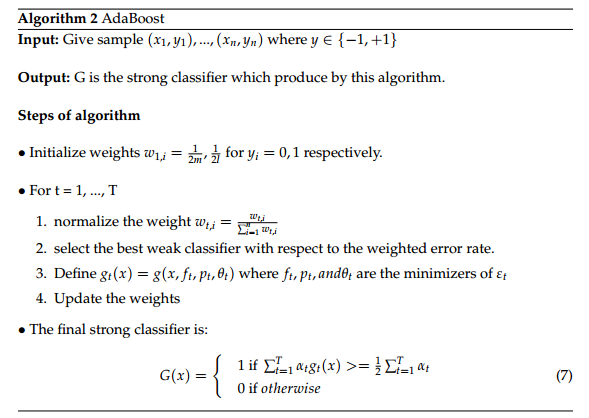Machine Learning with Boosting
This blog will talk about the theory and implementation about famouse
concept in machine learning – Boosting.
All algorithms are implemented in Python.
There are two main tasks which people want to finish with Machine Learning.
- Classification
- Regression
There are a lot of other ways to do it but now we focus on boosting algorithm. You know that it’s a fantastic way to make our work done.
Adaboost for classification
If you never hear about adaboost, I recommend you to finish the 7-th lab in MIT 6.034. It will help you a lot to understand what I’m taking about. But this lab didn’t build adaboost completely. So, I implement it individually.
Give the input training samples which have tag with it.

where x[i] is the feature of the i-th sample point and y[i] is the label (soemtimes we call it as tag) with the sample point.
In this algorithm, there are only two different label of samples {-1, +1}.
Some classifier like decision tree also can work correctly about classification. But it’s also easy to overfitting. So, we can’t use it in some special situation. Instread of using decision tree, we use decision stump which is a special type of decision tree which’s depth is only one. So we call it as decision stump.


Yoav Freund and Robert Schapire create this algorithm AdaBoost which means adaptive boosting.

Test case:
There are training points with two different label. What if we input a point which’s type is unkown, what the result will be?

The test result is below there:

Just create a object of class Adaboost with your training samples with label. like this:
|
|
API prediction() of class AdaBoost will return the result of prediction according to the model. All job done.
You could find other test case in my repository in github.
Implementation of Adaboost in Python
There is an assignment about AdaBoost in Stanford CS 229, which will ask student to implement stump booster. But I don’t really understand the skeleton of that source code. I think there must be something worng with that matlab script stump_booster.m. The week classifier can’t lost the direction information.
|
|
Run boost_example.m, you will see the classifier line with different iteration.



Boosting Tree
We have knew to use AdaBoost to do classification. Boosting Tree will help us to do regression.
We also use decision stump as the weak classifier. But implementation of decision stump in this algorithm is not the same as that in AdaBoost.
There are ten samples in my test module:
|
|
The expected value of Original_Data[i] is ExpVal[i]. The input is from 1 to 10. How about to predict the output when the input is 1 or 11?
Let’s test it. Here is the result:
Just used 11 weak classifier to construct a stronger classifier to do the regressio. The output is reasonable.
Here is my implementation of Boosting Tree
Implementation of Boosting Tree in Python
Reference:
- MIT-6.034, Artificial Intelligence. Lab-7
- << The statistic methods >> by HangLi.
- Wikipedia
Photo by Jason Leaster

作者: Jason Leaster
来源: http://jasonleaster.github.io
链接: http://jasonleaster.github.io/2015/12/13/machine-learning-with-boosting/
本文采用知识共享署名-非商业性使用 4.0 国际许可协议进行许可